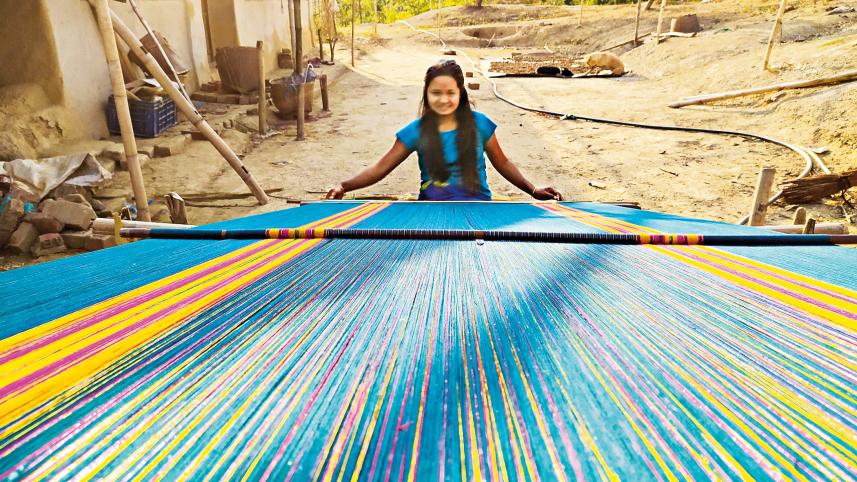Is Khagrachhari's Bain loom tradition dying?

We have no project for weavers. The bain-loom industry is in danger of extinction in absence of patronisation for its immediate revival.
The back-strap handloom, popularly known as "Bain" loom, is a centuries-old textiles craft of the indigenous people of Khagrachhari district. But faced with continuous aggression from the power-loom industry, weavers are being compelled to leave their ancestral profession.
In addition, the high price of raw materials, coupled with the low-cost of finished products, has made the situation worsen over the years.
According to Bangladesh Handloom Board, around 12,000 looms have shut down in the district in the past 30 years.
Even in the '90s, there were as many as 40,000 looms in the district, which has now come down to 28,000.
According to sources, many traditional weavers have been compelled to switch crafts after incurring huge losses over the years.
For example, there were more than 100 looms in Dhumnighat area of Sindukchhari, but that number has now come down to 50, said Dahen Bikash Tripura, a resident at the area. "Once upon a time, the knocking sound of the loom was heard day and night across Dhumnighat. But we're past those days now."
He said many of the traditional weavers have now switched to jhum cultivation.
During a recent visit to the area, this correspondent saw weaver Maryam Tripura spinning yarn and running the loom to make traditional Thami.
"I have a passion for our traditional Bain-loom industry. Whenever I find time after finishing my studies, I start running the loom in my own bid to keep the industry alive," she said.
She said weavers don't get much profit anymore due to increase in raw material prices.
"A loom-made winter blanket is sold at Tk 600 to 700. But to make the blanket, we have to buy wool for around Tk 450 to 500," said Maryam Tripura.
Besides, lack of capital and problems related to marketing and distribution were also behind handloom sector's gradual downfall, said Pranab Kumar Das, liaison officer of Bangladesh Handloom Board of Khagrachhari.
The government trains a small number of weavers every year, which is much less than the demand. In 2022, only 30 weavers will be trained, sources said.
Shapla Tripura from Khagrachari has been working in the weaving industry for 15 years. She received the Joyeeta Award for her work for the bain-loom industry.
She has a Bain Textile outlet in Khagrachhari city. "Before, we used to weave 30 to 50 pieces. Now, we get no more than five or six orders a month," she lamented.
She said in order to sustain this industry, marginal entrepreneurs have to be given benefits.
Md Mainuddin, coordinating Officer of Bangladesh Small and Cottage Industries Corporation of Khagrachhari, told The Daily Star, "We have no project for weavers. The bain-loom industry is in danger of extinction in absence of patronisation for its immediate revival."
According to the Handloom Census 2018, carried out by Bangladesh Bureau of Statistics, there were 116,006 handloom units in the country, which is a 36.79 percent fall from 2003, when there were 183,512.




 For all latest news, follow The Daily Star's Google News channel.
For all latest news, follow The Daily Star's Google News channel.
Comments